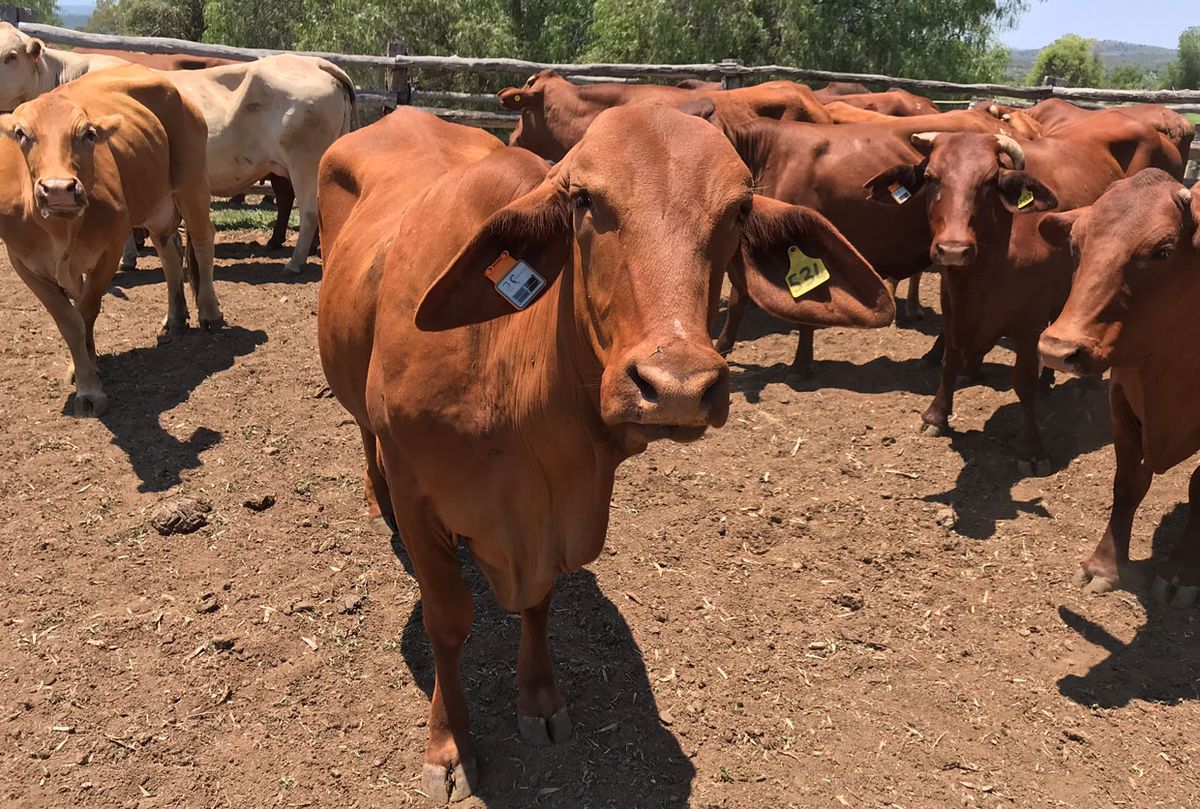Cattle may be at home on the range, but modern ranchers need to be able to find their wayward cattle, and inefficiencies in tracking cost the cattle industry around US $4.8 billion a year. At a recent conference about connected devices in Amsterdam, Jan Willem Smeenk of the Dutch company Sodaq and Thomas Telkamp of the startup Lacuna Space talked about connecting cattle into a future Internet of bovines.
Smeenk's company builds solar-powered ear tags that alert ranchers to the whereabouts and well-being of their cattle. The tags work up to distances of about 5 kilometers via LoRa, one of the leading low-power, long-range standards for the Internet of Things (IoT). Telkamp's company is launching LoRa gateways on satellites, which could one day help ranchers track down cattle that stray beyond their owners' local coverage areas.
“What makes LoRa interesting for us is you can have two approaches: Use a public network, or deploy your own network," says Smeenk. For now, Sodaq is mainly selling its cattle trackers in Australia to ranches that lie beyond the reach of conventional mobile networks.
In January, the industry alliance behind LoRa declared that 100 network operators around the world were using its standard, putting it a smidge ahead of competing IoT standards, which have about 60 network implementations each. With LoRa service in place, companies have started using it to follow the movements of people with dementia, connect with pollution monitors, and track when recycling bins need to be changed.
The intellectual property of LoRa chips belongs to Semtech, which licenses it to other chipmakers, too. Users can set up their own gateway, either by building their own hardware around a LoRa-compatible chip, or by buying one of a growing number of prefabricated options, some based on Raspberry Pi or Arduino.
“The main differentiator for LoRa over the other competing low-power, low-bandwidth, and long-range protocol standards for the Internet of Things is that it is the only one where you can build out a network from scratch without relying on any third-party providers," says Alasdair Allan, a technology researcher and consultant in Exeter, England.

LoRa sends data in short bursts or messages by modulating the spread of data “chirps." Those messages are similar in size to those sent via SMS on cellular networks, but they cost less energy to send and receive. The LoRa patent dates to 2008, although it didn't appear in a commercial wide-area network standard until 2015.
Sigfox, the original low-power standard, began development in 2009 and came as an integrated hardware and network package. Then in 2016, 3GPP, the industry collaboration that has defined standards for mobile service from 2G onward, established the Narrowband Internet of Things (NB-IoT) standard and the LTE-M standard. Both are designed to work with cheap chips and to extend battery life by limiting data rates.
LoRa and Sigfox both use unlicensed spectrum, which makes them subject to interference and puts a cap on their duty cycles. That means users cannot use these options for anything requiring large amounts of data or many devices per gateway (though Smeenk says he tells ranchers to expect each gateway to handle 2,000 cattle). Meanwhile, NB-IoT and LTE-M make use of spectrum already assigned to carriers for mobile telephony. That means they are a little easier for operators to integrate, and offer slightly higher data rates.
Because NB-IoT and LTE-M share bands with 4G, they can penetrate buildings in urban areas better than LoRa and Sigfox. But NB-IoT has a harder time than LoRa when it comes to handling devices that move between towers. So NB-IoT makes more sense for devices that stay in one spot, such as water-meter readers.
But for all the talk of standards, scaling up the Internet of Things is still a work in progress. Software developer Maxime Mularz's startup, Hostabee, uses LoRa to track the temperature and humidity inside 1,000 beehives in places such as Austria and the United States. The company's devices must be capable of interacting with networks in different countries. Using LoRa is an advantage because so many networks have already deployed it, and beekeepers who work outside of a coverage area can build their own compatible gateways and either manage the data locally or send it up to the cloud via a backhaul operator. Still, Mularz says, “we spend a lot of time working with network operators to adapt to their back ends."
Some operators, including the French telecom giant Orange, have been testing ways to make it possible for LoRa devices to roam across national borders. If they succeed, beekeepers, some of whom rent hives in different countries, may soon waggle for joy.
This article appears in the March 2019 print issue as “LoRa's Bid to Rule the IoT."
